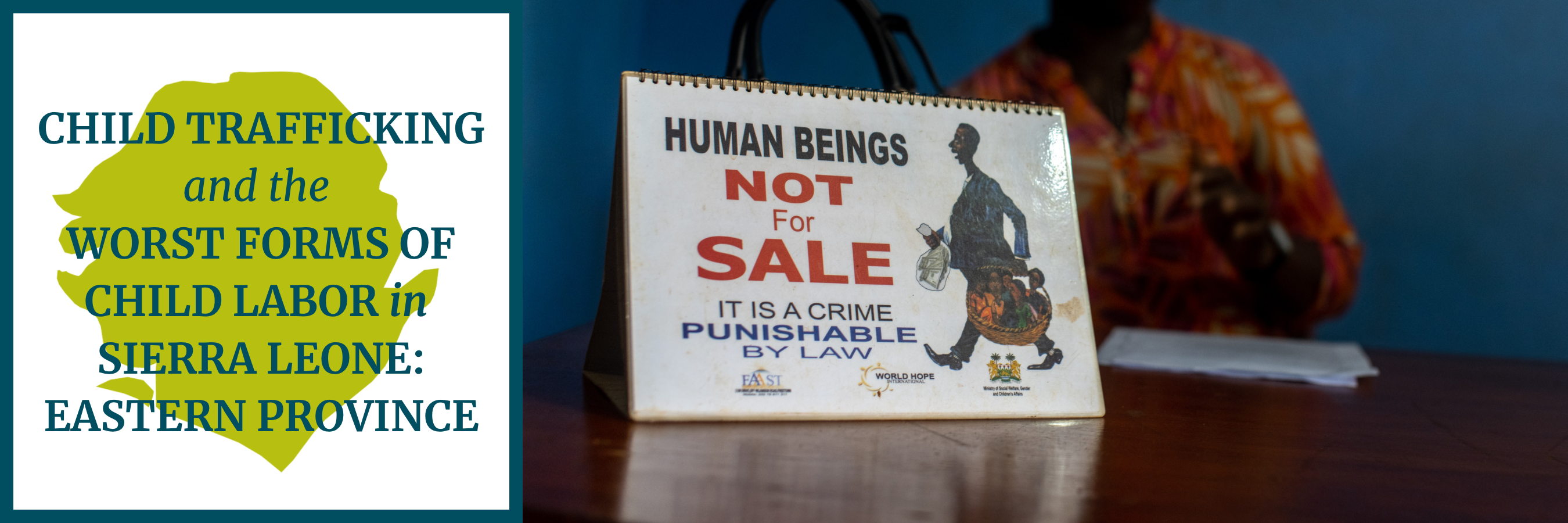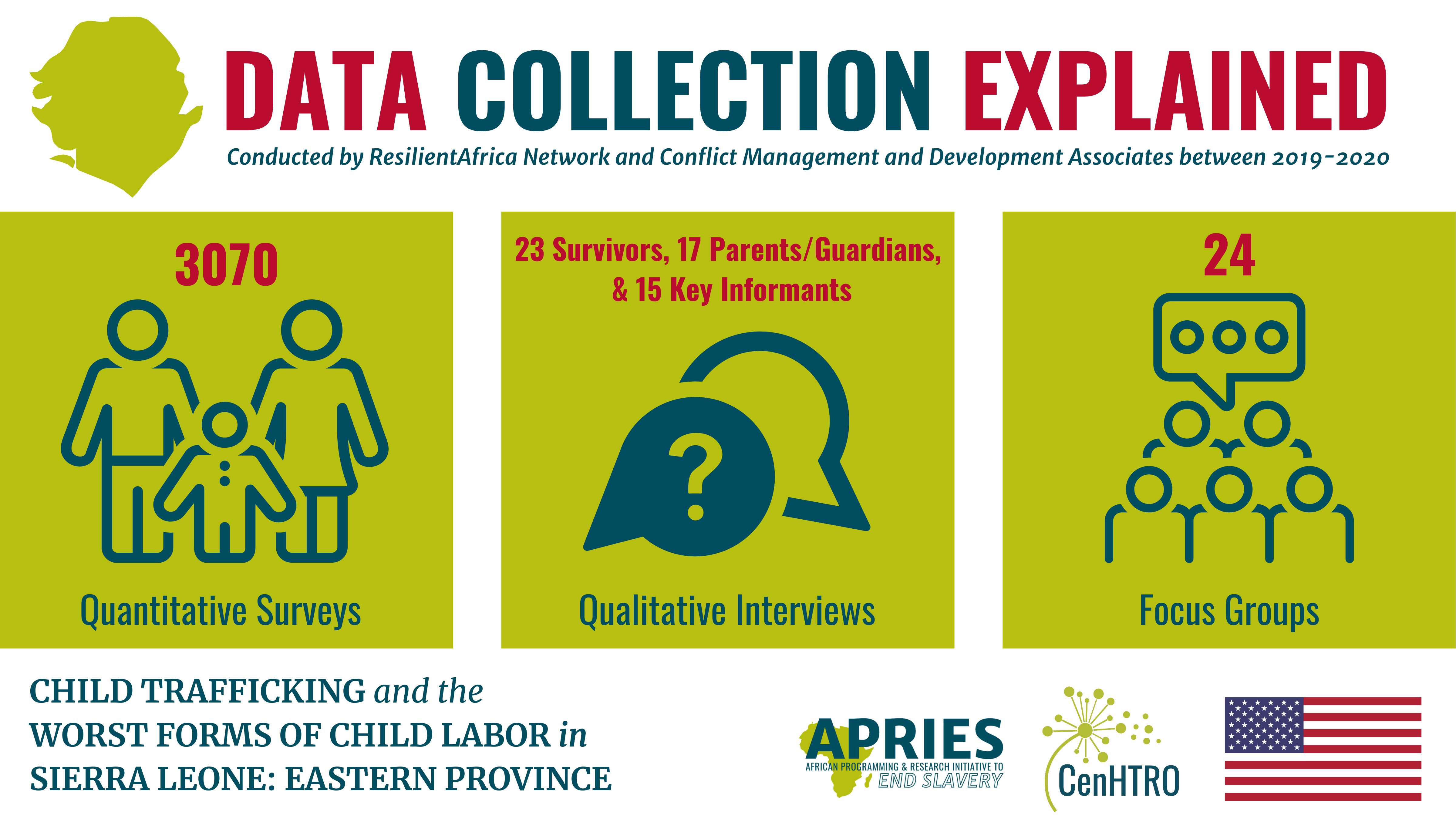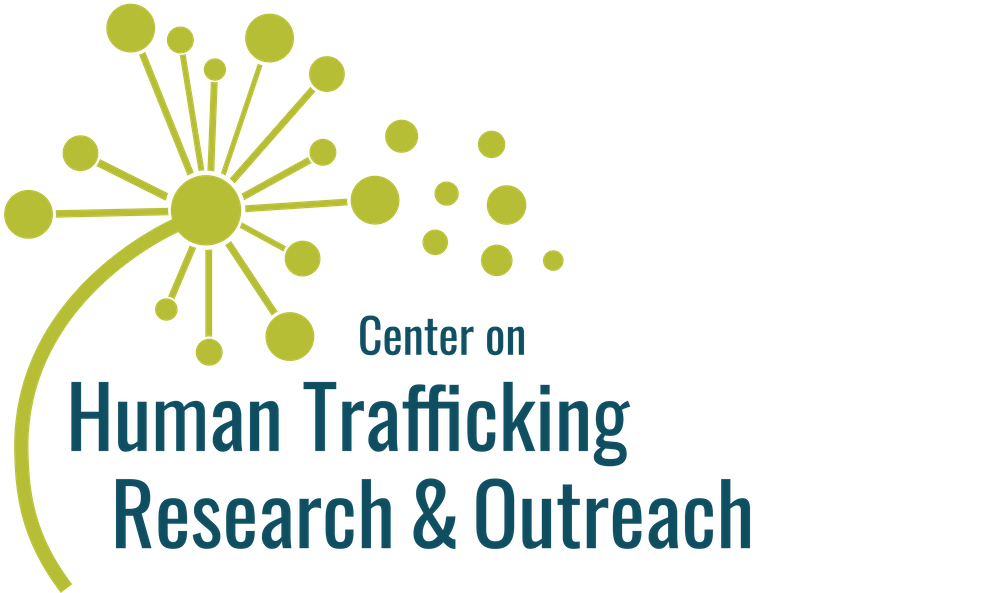Report: High Number of Sierra Leone Children Experience Trafficking Before 18th Birthday
Friday, February 18, 2022

An estimated 33% of children aged 5 to 17 in Sierra Leone’s Eastern Province have
experienced child trafficking and 36% have experienced child labor, according to new
research from the African Programming & Research Initiative to End Slavery (APRIES)
at the University of Georgia's Center on Human Trafficking Research & Outreach (CenHTRO).
“Child Trafficking and the Worst Forms of Child Labor in Sierra Leone" (PDF) is the largest scale household survey on the topic ever undertaken in Sierra Leone
and offers key detail into how and why child trafficking happens in the West African
country.
Read the Full Report (PDF) | Read Recommendations for Policy (PDF) | Read an Executive Summary (PDF)
The report specifically describes child trafficking and child labor in Sierra Leone's Eastern Province, which comprises three rural districts near borders with Guinea and Liberia and is among the poorest areas in what is considered one of the world’s poorest countries.
The nature of trafficking in Sierra Leone results in Eastern Province children being taken outside the region, often to more urban areas. The report’s insight and recommendations therefore have the potential to improve children’s lives across the country.
“Without reliable estimates of child trafficking and child labor, government and NGOs cannot have a baseline to work from, making it impossible to know if we are making progress in reducing the problem,” said CenHTRO Director David Okech, principal investigator for the report.
UGA faculty Tamora Callands, Jody Clay-Warner, Nathan Hansen, and University of Liverpool professor Alex Balch served as co-investigators.Okech added, “The high number of children in trafficking and labor is quite significant, and our goal is to partner in prevention, prosecution, and protection efforts to reduce the problem over time.”
Trafficking most commonly occurred when a child was relocated away from their biological family by someone offering the promise of educational opportunities, according to the report. Instead, away from home, the child experienced forced labor, was denied necessities like food and shelter, and lacked access to school. In some instances, relatives or acquaintances trafficked the child.
“I am the only one doing all the work and she did not send me to school,” one survivor said in an interview.
“While her own children went to school, I was left at home to undertake the household chores,” another survivor reported.
Survivors primarily described being forced into domestic work or street vending. Others participated in hazardous labor in the fishing, mining, or construction industries. The report defines child trafficking, in accordance with the United Nations’ Palermo Protocol (PDF), as the recruitment, transportation, transfer, harboring, or receipt of a person under the age of 18 for any form of exploitative labor or commercial sex act. Child labor is any work that deprives children of their childhood, their potential and their dignity, and that is harmful to physical and mental development.
Policymakers, service providers, and communities can employ the data to guide programming, legislation, and policies that will mitigate future exploitation of children in Sierra Leone.
“This comprehensive study provides new evidence of the nature of the problem in the country,” said Sierra Leone Minister of Social Welfare Baindu Dassama. Multiple Sierra Leone ministries partnered with APRIES on the study. “Government welcomes the research findings because it provides us a toll for enhancing our existing response and prevention interventions through appropriate policies, programs, and actions.”
Read the Full Report (PDF) | Read Recommendations for Policy (PDF) | Read an Executive Summary (PDF)
Report Glimpse
Between 2019 and 2020, researchers conducted over 3000 household surveys, interviewed
survivors, parents, and key stakeholders, and organized 23 focus groups. Conflict
Management and Development Associates, a Sierra Leone-based research agency, and the
ResilientAfrica Network, a research organization at Makerere University in Uganda,
collected the data under the immense pressures presented by the Covid-19 pandemic.
The US Department of State Office to Combat and Monitor Trafficking in Persons’ Program
to End Modern Slavery funded the research. 
“The study amplifies perspectives of important Sierra Leonean stakeholders to better understand what actions can be taken to reduce and prevent child trafficking,” said CenHTRO Assistant Research Scientist Anna Cody. “Our findings reveal opportunities for increased survivor-centered and community-based collaborations between national leaders, local communities, and international groups to reduce child trafficking prevalence not just in Sierra Leone, but globally as well.”
Among other findings, the report summarizes community perspectives on child trafficking and child labor. It also identifies the populations most vulnerable to trafficking: 12-to-17-year old children, children who have lost one or both parents, and children not enrolled in school.
Sierra Leone and the Eastern Province
Kenema, Kailahun, and Kono districts form the Eastern Province of Sierra Leone. Of a population over 1.6 million persons, about 54% are under 19 years old. Agriculture—specifically subsistence rice farming— is the most prominent occupation in the province, with cocoa and coffee production notable in Kailahun. Diamond mining, a practice known to have fueled civil conflict in the country, occurs in all three districts. APRIES selected the Eastern Province under the advice of its partners in the Government of Sierra Leone and in-country NGOs.
Over the past 30 years, Sierra Leone experienced a series of man-made and natural disasters that left the country’s children vulnerable to trafficking. A civil war from 1991 to 2002 and the Ebola epidemic increased poverty and malnutrition in the country. These traumatic events exacerbated the number of orphaned or abandoned children in Sierra Leone, and the report suggests that children who have lost one or both parents have a higher rate of victimization. The ongoing Covid-19 pandemic has also made life more difficult for Sierra Leone’s children, increasing their vulnerability to trafficking and impacting effective responses to the problem.
The report represents the first endeavor to systematically and quantitatively examine the scale and scope of child trafficking and child labor in Kailahun, Kenema, and Kono, and includes a district-level breakdown of prevalence estimates.
One unique aspect of the challenges faced by children in Sierra Leone is the dependency of families on informal fostering arrangements known as menpikin, in which children reside in households separate from their biological parents. The practice predates the civil war, is common in many Sub-Saharan African countries, and is considered a way for parents to improve their children’s lives.
But the report—informed by survivors and key stakeholders—proposes that bad actors can abuse menpikin.
“We were poor, and my mother could not cater for my needs, so she saw an opportunity in my trafficker’s request to take me away. [The trafficker] promised [my mother] of giving me a better education,” one survivor said in an interview.

Policy Recommendations
To begin to address trafficking in the country, the Government of Sierra Leone passed anti-trafficking legislation in 2005. It also launched the Free Quality School Education Program to improve access to school and created the Hands Off Our Girls Campaign to raise awareness about gender-based violence. But the report recommends much more be done.
“Our recommendations reflect observations on service and policy gaps identified in the research and offer ways in which prevention and protection services can be supported to reduce prevalence of child trafficking and exploitation,” said APRIES Policy Officer Helen Bryant.
The report’s recommendations include greater safeguards for children in informal fostering arrangements; increased access to educational opportunities, especially for children living without one or both parents; and, overall, increased collaboration and cooperation throughout Sierra Leone society— between government agencies, families, community leaders, and all non-government stakeholders—to prevent trafficking and support survivors.
Read the full Recommendations for Policy document (PDF)

Going Forward
Following this report, APRIES and CenHTRO have planned an endline study, beginning in 2022, that will assess changes in the prevalence of child trafficking and measure the impact of current anti-trafficking initiatives. Additional research projects that extend or expand upon the report are in development or ongoing.
APRIES also works with implementation partners, like World Hope International, to apply the report’s findings to improve anti-trafficking efforts in Sierra Leone. For example, to address the high prevalence of trafficking for out-of-school children found in the report, APRIES’ partners are developing new strategies for community sensitization and engagement of youth, caregivers, and community groups.
“This baseline report results from the considerable collective effort of the APRIES team, Sierra Leonean government officials, APRIES’ research and NGO partners, and research participants,” said CenHTRO Associate Director Claire Bolton. “We spent thousands of hours designing the project with invaluable contextual detail that ensured safe, precise data collection in far-flung locations during a global pandemic.”
